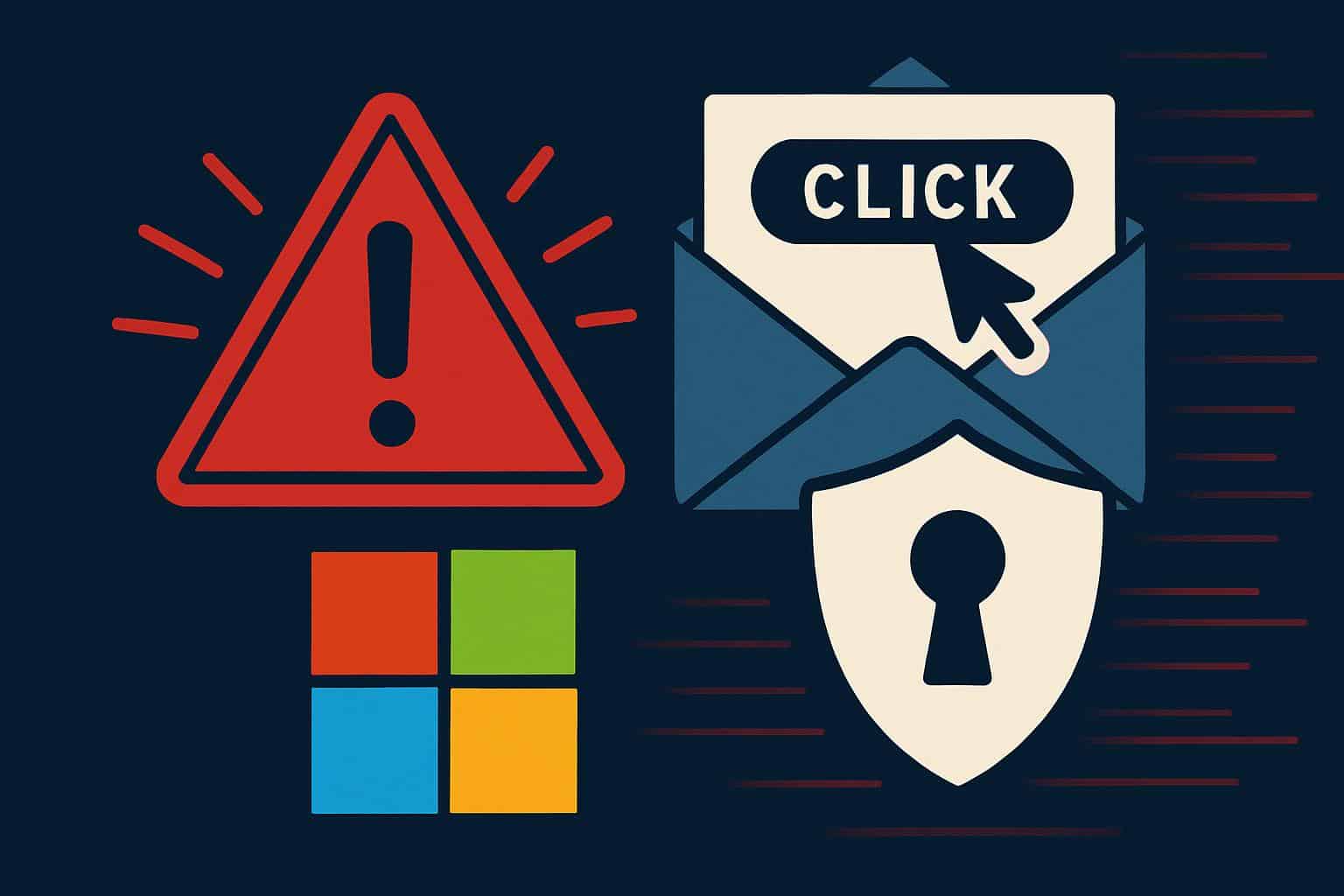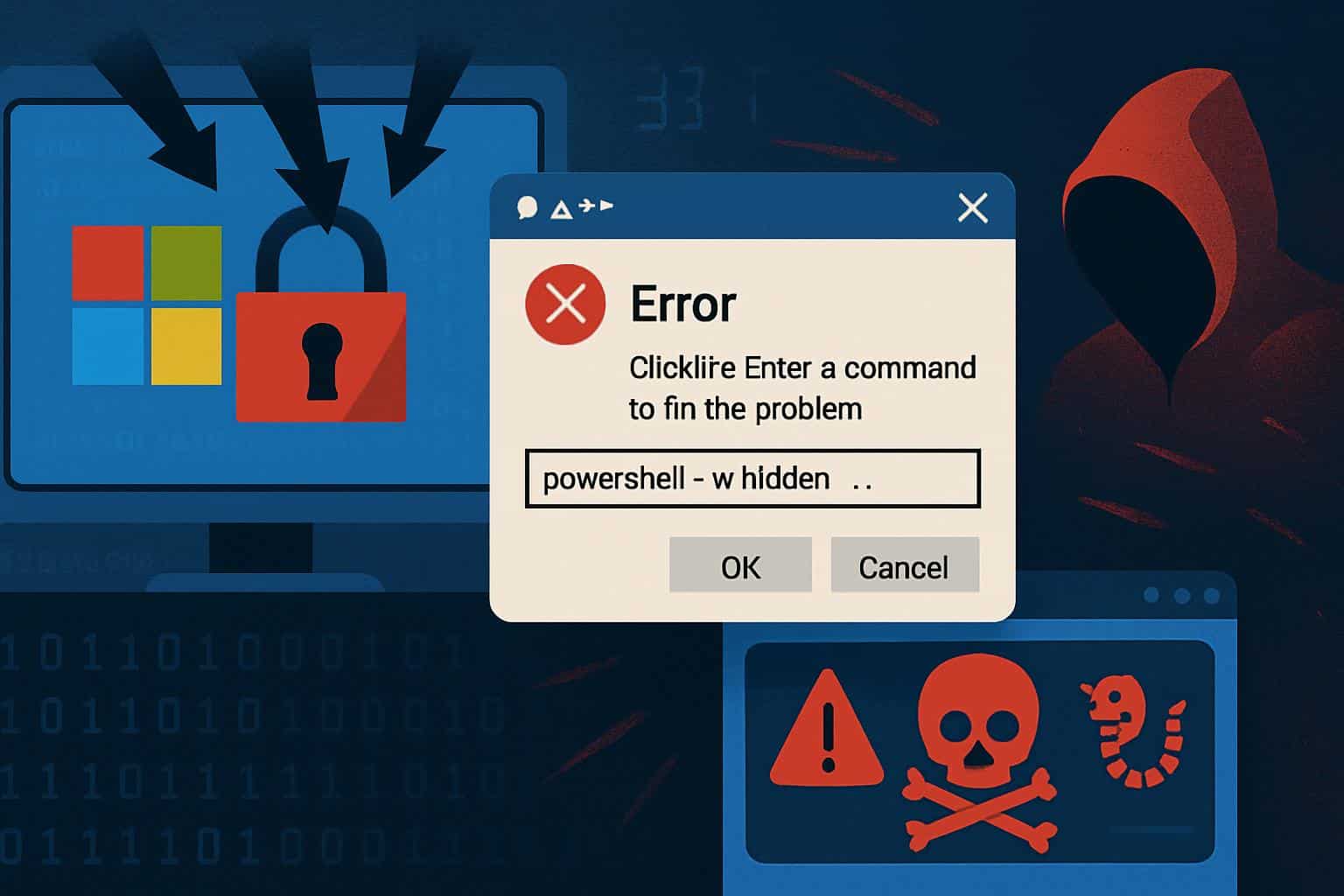Microsoft is warning about a rapidly growing form of social engineering called ClickFix that isn’t addressed by software that has been the first, best line of defense so far. The method preys on our tendency to troubleshoot, coaxing users into running commands themselves that will quietly install malware — and often slip past traditional security solutions without setting them off.
What ClickFix Is And How It Works To Evade Defenses
ClickFix is a persuasion play. The attackers present a plausible-sounding problem — a login glitch, unsuccessful verification, booking mismatch or “system check” prompt — and guide victims to paste a preloaded command into the Windows Run dialog or terminal. That command tends to spawn a legitimate operating system tool, such as PowerShell or mshta, which will retrieve and run malware in the memory space. No error, no glaring alert, and the victim is convinced they just “fixed” something.
- What ClickFix Is And How It Works To Evade Defenses
- The Numbers Driving The Spike In ClickFix Activity
- Real Campaigns And Results With Malware Delivered By ClickFix
- Why Security Tools Struggle Against ClickFix Tactics
- What To Do Now To Reduce ClickFix Social Engineering Risk
- The Human Firewall Matters Most Against ClickFix Threats

The gimmick relies on human help. It seems like the kind of IT hygiene that’s just routine: copy this, punt that, you’re good to go. And that’s why it bypasses hardened email filters and URL scanners — the user is the installer.
The Numbers Driving The Spike In ClickFix Activity
In its most recent Digital Defense Report, Microsoft explains ClickFix has emerged as a favored initial access tactic and is used by both criminal and nation-state-aligned groups. The company’s telemetry is huge — more than 100 trillion signals a day, billions of emails screened daily, and tens of millions of identity risks flagged — and we could see those attempts at ClickFix go way up.
One internal data point carries extra weight: Microsoft Defender Experts saw ClickFix as the top initial access vector in their monthly notices this past year, representing nearly half of observed attacks. Microsoft also links 28 percent of documented breaches to phishing and social engineering, underscoring just how frequently it’s us, not you, that opens the door. Independent research studies follow suit: Verizon’s Data Breach Investigations Report for years has found the human factor implicated in most breaches.
Real Campaigns And Results With Malware Delivered By ClickFix
Microsoft has kept an eye on a long-running campaign masquerading as a high-volume travel website during the busy months of vacation season. When targets clicked through, they were presented with a persuasive page featuring a fake CAPTCHA and a “quick-fix” instruction. In the background, the site prepped the clipboard with a command that, when pasted in Run or a terminal, would execute on paste.
Outcomes have included low-key credential theft on one end of the spectrum and full ransomware deployment at the other. The payloads associated with these intrusions are Lumma Stealer, XWorm, AsyncRAT, VenomRAT, DanaBot, and NetSupport RAT, all of which have been used to harvest data, maintain remote access, and perform lateral movement through networks. With a couple of strokes by the victim, attackers can gain persistent access in minutes, Microsoft says.

Why Security Tools Struggle Against ClickFix Tactics
Conventional anti-phishing tools scan for malicious links or attachments. ClickFix bypasses that by provoking user execution, a tactic which is documented in the MITRE ATT&CK framework as User Execution and abuse of legitimate interpreters such as PowerShell. And finally, since commands commonly load code into memory and use living-off-the-land binaries, looking for files may result in a missed event. And clipboard poisoning — in which a website surreptitiously swaps what you intend to paste for something different — creates another blind spot.
With a foothold in place, attackers move rapidly: scooping up tokens, dumping browser-stored passwords, or deploying remote access tools that don’t look out of place alongside normal admin activity. That’s when it stops being about prevention and starts being about containment and incident response.
What To Do Now To Reduce ClickFix Social Engineering Risk
Microsoft’s advice is direct: change conduct. So if you ever find anything on the internet that says to copy and paste a command into some dialog box like Run, PowerShell, Command Prompt, or Terminal, stop. Treat that advice as if it were a sketchy file attachment. If it purports to be from a vendor or your IT organization, check with an established channel before responding.
For individuals
- Type, don’t paste, when you need to execute commands — it makes you take a second look.
- Open Run or Terminal in response to your command, not when some webpage or pop-up tells you.
- Be suspicious of strange phrasing, urgency, and “too helpful” tips that seem to be outside what you know about normal support flows.
- Keep your browser, OS, and security tools up to date; enable reputation-based protection and SmartScreen equivalents.
For organizations
- Train for this.
- This is not the kind of thing that is difficult to bring up in corporate training and should be a “never” policy (unless specifically pasting commands from prompts, i.e., if someone has your remote control).
- Turn on PowerShell script block and module logging; send logs to your SIEM.
- Observe the clipboard-to-terminal behavior and irregular usage of utilities such as PowerShell or mshta, especially with hidden or encoded parameters.
- Enforce application control (Windows Defender AppControl or AppLocker) and attack surface reduction rules to prevent scripting abuse.
- Take away local admin rights, move to just-in-time access, and harden browsers to minimize drive-by risk.
External agencies echo the urgency. The FTC alone estimates that people have lost an average of more than a billion dollars, year in, year out, to text-based scams. The FBI and CISA have also warned about living-off-the-land tradecraft that skirts basic filters. ClickFix is the newest spin on that same playbook.
The Human Firewall Matters Most Against ClickFix Threats
Attackers are counting on you to compromise your machine yourself. That, at its heart, is ClickFix — the weaponization of helpfulness. Technology can sound the alarms and mitigate damage, but the really important work is saying no to running commands on faith. Controlling a corporate ransomware surge is hard; as with this current wave of social engineering, not a whole lot works, but the one thing we do know generally works is the defense between the chair and the keyboard.

